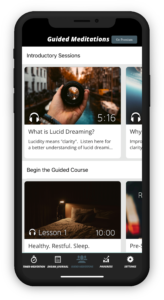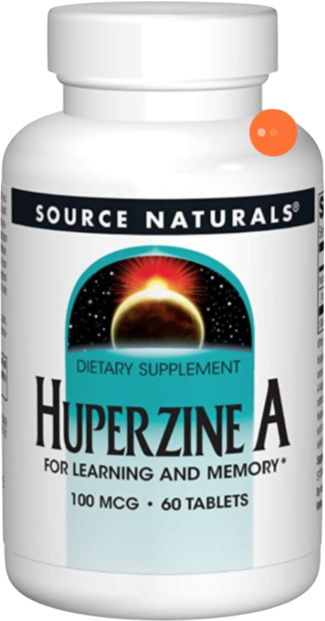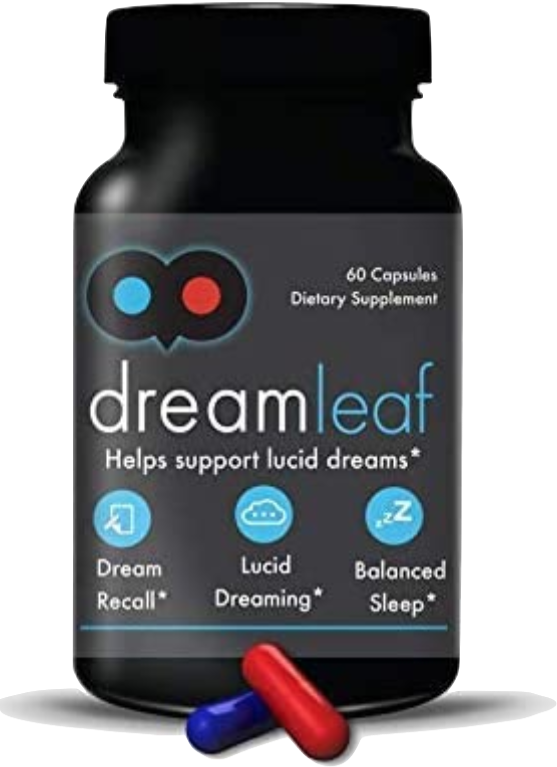Before jumping into lucid dreaming pills and supplements, if you want to learn lucid dreaming your best bet is to take the Mindful approach and using the Mind Awake app. Motivation, understanding, and persistence are the three keys to mastering lucid dreaming.

However, while the lessons in the app are comprehensive and straight forward, it can still be difficult to master lucid dreaming. And because lucid dreaming is such an incredible experience, I don’t want people to be discouraged if they are not successful right away.
While these lucid dream supplements should be approached with caution, there is anecdotal evidence supporting their efficacy. So, if you have learned the practices and you put in the effort, but you’re still not seeing results, you might want to consider these supplements to bolster your practice.
In my experience (and backed by scientific evidence cited below), some of these supplements combined with the behavioral practices work really well for quick and easy lucid dreaming.
Top 5 Supplements and Pills for Lucid Dreaming
1. Galantamine

Galantamine increases the clarity of present moment awareness. It also supports the retention and retrieval of memory. When used at night, dreams appear more vivid which usually improves dream recall. In addition to improved dream memory, many find that taking galantamine results in more stable, longer-lasting lucid dreams.
It is also a great supporting lucid dream pill for practicing the Wake Initiated Lucid Dreaming (WILD) technique. This is when you maintain consciousness as you fall asleep, allowing you to enter the dream consciously.
Galantamine is a naturally occurring substance found in the Amaryllidaceae family of plants, including the snowdrop, daffodil, snowflake, and spider lily.
These plants have been used in traditional medicine for thousands of years. In the ancient Greek epic The Odyssey, the Galanthus snowdrop is used by Odysseus to counter the delirium and forgetfulness induced by the sorceress Circe’s drugs which were flowering plants within the Nightshade family[1].
Since non-lucid dreams are veiled in the shade of forgetfulness, memory enhancing supplements like galantamine seem to counter the haziness and reawaken a sense of mental clarity during the dream.
Galantamine has been used in modern medicine since the 1950s and is approved by the FDA for treating Alzheimer’s disease. It increases the availability of acetylcholine, a neurotransmitter that enhances alertness[2], sustains attention[3], facilitates learning and memory[4], and also promote REM sleep[5].
Dream researchers have shown that galantamine is effective in increasing the frequency of lucid dreams. With a sample of 121 participants, LaBerge, LaMarca, and Baird found that 27% of participants reported having a lucid dream after a 4 mg dose of galantamine, while 42% of participants reported having a lucid dream after an 8 mg dose[6]. Participants in this study used galantamine in conjunction with the Wake Back To Bed (WBTB) method.
Recommended dose: 4 – 8 mg. (2 hours before waking if you’re practicing WBTB.
Side effects may include nausea, vomiting, diarrhea, restlessness, insomnia, and low energy the following day.
2. Huperzine A

You can find this natural alkaloid in the Huperzia Serrata clubmoss. It is a key ingredient in Qian Ceng Ta, a Chinese herbal tea and one of many examples of Huperzine A found in ancient Chinese Medicine. In its modern synthetic form, Huperzine A treats cognitive decline and memory impairment.
Much the same as galantamine, Huperzine A increases the availability of acetylcholine. Galantamine and Huperzine A both inhibit the production of an enzyme called acetylcholinesterase, which catalyzes the breakdown of acetylcholine. Huperzine A inhibits the breakdown so more acetylcholine will be available at the connections sites between neurons (synapses). In addition to that, acetylcholine receptivity increases, allowing for more of the neurotransmitter to be produced.
Although there is no research into the effects of Huperzine A as a ‘lucid dreaming pill’, it affects the cholinergic system in the same way as galantamine. As a result, one may expect similar effects while practicing lucid dreaming. The anecdotal evidence supports this: Many lucid dreamers report increases in vividness, recall, and lucidity of their dreams after taking galantamine.
Recommended dose: 200 – 400 µg/mcg.
Dose-related side effects may include nausea, vomiting, diarrhea, restlessness, and insomnia.
3. Choline

You can find choline in abundance in many natural food sources. An essential nutrient, choline contributes toward a healthy, robust diet. As a supplement, there are three different types, which include alpha GPC, choline bitartrate, and choline CDP.
Choline also speeds up the production and release of acetylcholine in the brain. Low choline levels in the blood can actually impair memory. And as mentioned earlier, Galantamine and Huperzine A are effective in treating memory impairment. So, to really give your lucid dreaming practice a boost, consider taking all three of these supplements.
The effectiveness of these supplements supports the importance of ‘remembering’ in the practice of lucid dreaming. Many lucid dreamers recommend using choline in conjunction with Galantamine or Huperzine A to provide an additional boost.
Recommended Choline dose: Alpha GPC 300 – 1200 mg.
Choline Bitartrate 400 – 800 mg.
Thomas Yuschak, author of Advanced Lucid Dreaming: The Power of Supplements recommends against using choline CDP as it may interfere with deep sleep.
Mindfulness, memory, & lucidity
There is an interesting connection here between memory, lucidity, and the importance of mindfulness in lucid dreaming. Mindfulness comes from the Sanskrit, sati, which means “remembrance”.
In mindfulness practice, mindful moments often occur by simply remembering to focus on the breath[7]. Recognize when the mind has drifted off into a daydream or a negative thought pattern, check in with the breath, and come back to the here and now.
These pleasant mindful moments (during waking life) are very similar to moments of lucidity in the dream state. The mind wanders about, fully caught up in the dream until you remember to contextualize and come back to the present moment.
4. Mugwort

Mugwort is the common name for the Artemisia Vulgaris. The name of this aromatic plant derives from the ancient Greek goddess Artemis.
There is much folklore surrounding this plant as it has been used for healing purposes in Ayurvedic medicine and many other indigenous cultures, including those of North America, Asia, and Northern Europe. In the European Middle Ages, people used Mugwort to protect against evil spirits.
As a dream supplement, Mugwort reportedly increases the vividness of dreams – enhancing clarity, detail, and intensity. The Artemisia Vulgaris plant also contains a psychoactive component called Thujone, which may be responsible for this increased vividness.
Some other common uses for Mugwort are as an essential oil, herbal tea or incense. Some people even use mugwort to manage fatigue.
Recommended dose: 100 – 400 mg before sleep. 3 – 9 drops of standard tincture
Side effects include grogginess upon awakening and possible allergic reactions
5. Vitamin B6

This essential nutrient can increase dream vividness AND dream recall. Vitamin B6 helps convert amino acids into the neurotransmitter serotonin. Research has shown that a 250mg dose of Vitamin B6 increases the cortical arousal of neural pathways during REM dream sleep.
Participants of this study reported increased scores of vividness, bizarreness, emotionality, and color[8]. Later research, conducted with a larger group of participants, demonstrated that Vitamin B6 increased dream recall but had no effect on the other self-reported measures of vividness, bizarreness, or color.
It is still considered to be an effective supplement for lucid dreaming due to its memory-enhancing properties[9].
Recommended dose: 100 mg daily before sleep.
A few more lucid dream supplements…
There are additional supplements available over the counter, which provide a medley for optimizing dream-affects. The most popular brands are LucidEsc, DreamLeaf, and Claridream. The main ingredients in each of these are Huperzine A and Choline, either in the form of alpha GPC, choline bitartrate, or both. These lucid dream pills are a unique blend of natural herbs, such as mugwort, valerian root, and chamomile, to enhance sleep quality, increase dream vividness, ease digestion and relieve any symptoms of nausea.
In your search for lucid dreaming supplements, you may also come across 5-HTP and melatonin. While these supplements show potential for use in lucid dreaming, the research supporting them is inconclusive and often contradictory.
How to use lucid dream supplements
Before taking any pills or supplements, make sure you know what you’re taking. Please use responsibly and always read the instructions.
Just as food supplements are not a substitute for a balanced and healthy diet, neither are lucid dreaming supplements a substitute for a healthy lucid dreaming practice. None of these lucid dreaming pills or supplements, in and of themselves, are capable of inducing a lucid dream. They support faculties such as alertness, memory, and attention, which are necessary for inducing and maintaining lucidity.
Supplement your lucid dreaming practice
So, use lucid dream supplements as intended: in addition to your lucid dreaming skills, techniques, and practices which you can learn here!
Many lucid dreaming experts warn against using these supplements regularly. The brands listed above recommend waiting 3 to 7 days between each use. This also applies to Galantamine, huperzine A and choline. Always start with a lower dose and as with any other method, try these lucid dream pills for a few weeks and see what effects they have before deciding to try another.
Be gentle and take it slow. Once you get a taste for lucidity, try practicing without them. Can you still get lucid? As your practice develops you may begin to see that lucidity is a natural side effect of practices such as mindfulness.
Check out the Mind Awake app to develop a strong lucid dreaming practice!
With that in mind, supplements can still be useful if you need a boost, or if you’ve been out of practice for a while. May they support you on your journey as you wake up to the wonders of your dreams.
References
[1] Plaitakis and Duvoisin, 1983 – Homer’s moly identified as Galanthus nivalis L.: physiologic antidote to stramonium poisoning
[2] Jones, 2005 – From waking to sleeping: neuronal and chemical substrates
[3] Himmelheber, Sarter and Bruno, 2000 – Increases in cortical acetylcholine release during sustained attention performance in rats
[4] Ridley et al., 1984 – An involvement of acetylcholine in object discrimination learning and memory in the marmoset
[5] Platt and Riedel, 2011 – The cholinergic system, EEG and sleep
[6] LaBerge, LaMarca and Baird, 2018 – Pre-sleep treatment with galantamine stimulates lucid dreaming: A double-blind, placebo-controlled, crossover study
[7] Wallace, 2012 – Dreaming yourself awake: Lucid dreaming and Tibetan dream yoga for insight and transformation
[8] Effects of Pyridoxine on dreaming: A preliminary study
[9] Effects of Vitamin B6 (Pyridoxine) and a B Complex preparation on dreaming and sleep





